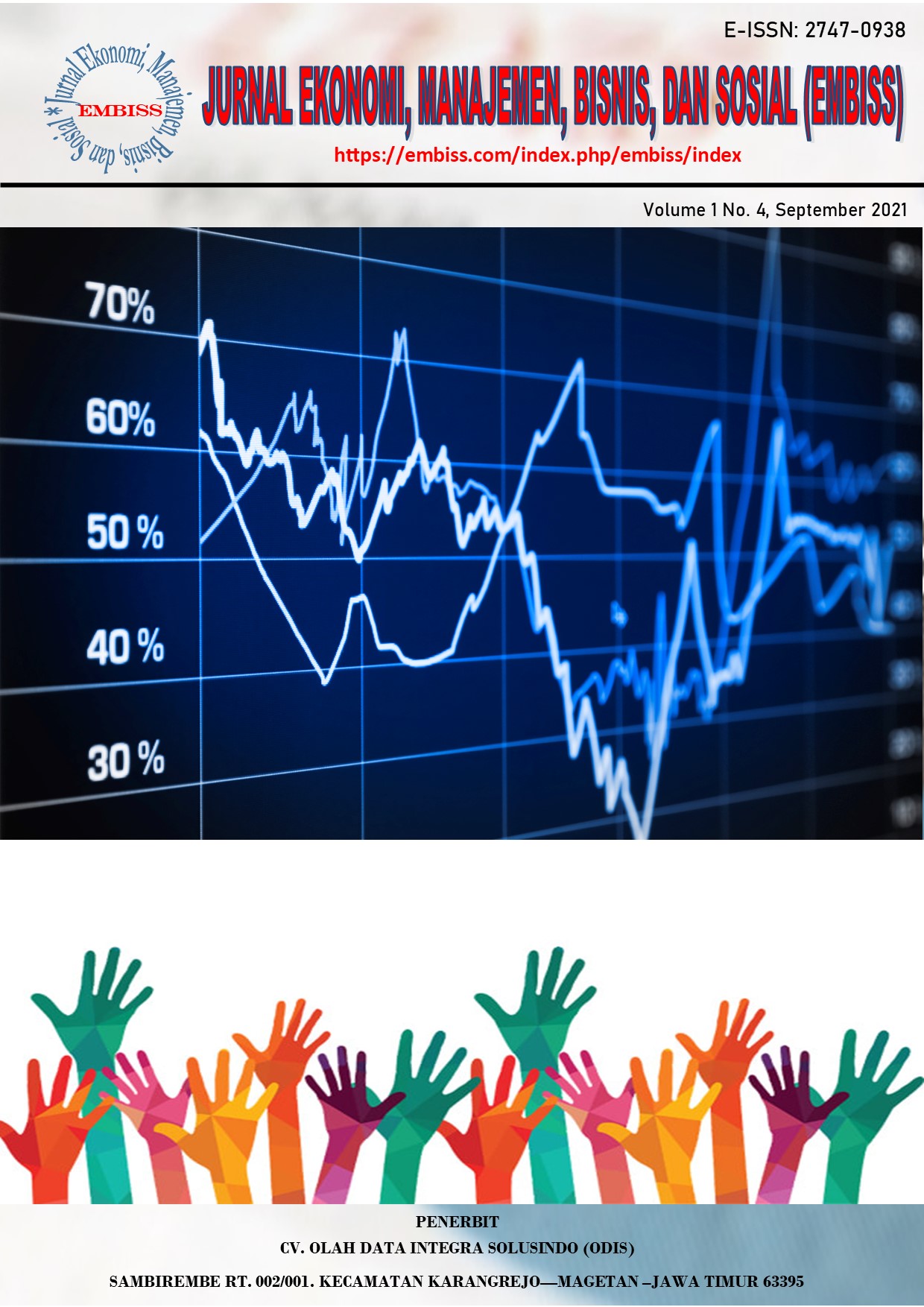Pengaruh Social Influence dan Self-efficacy Terhadap Intention to Use Mobile Payment System Pada Pengguna E-wallet
Keywords:
mobile payment system; self-efficacy; social influenceAbstract
This study aims to find out the influence of social influence and self-efficacy on the intention to use mobile payment in Sukabumi, especially in the millennial generation. The millennial generation is the generation that has the largest population in Sukabumi and the generation that is the fastest to adapt to emerging modern technology. This study uses quantitative methods with data collection techniques using questionnaires. The data obtained were processed and analyzed by multiple linear regression testing with a total sample of 101 respondent. The results obtained from this study prove that there is a significant influence on social influence and self-efficacy on the intention to use mobile payment either simultaneously or partially. The results of this study are expected to be a reference for interested parties on the topic raised.
Downloads
References
Bandura, A. (1997). Self-Efficacy: The Exercise of Control. W. H. Freeman & Co. https://b-ok.asia/book/2708361/d4ef2e
Butarbutar, N. A., & Harris, L. (2018). Analisis Faktor-Faktor Yang Mempengaruhi Minat Penggunaan Pembayaran Non Tunai Pada Aplikasi Transportasi Online Di Kota Malang. Statistical Field Theor, 6(2). https://jimfeb.ub.ac.id/index.php/jimfeb/article/view/4778
Cahyogumilang, A. P. (2020). Pengaruh Computer Self-Efficacy Dan Penerapan Model UTAUT Terhadap User Acceptance Digital Payment. Akuntasi Dan Manajemen, 31, 69–77. http://repository.stieykpn.ac.id/id/eprint/896
Dory, V., Beaulieu, M.-D., Pestiaux, D., Pouchai, D., Gay, B., Rocher, G., & Boucher, L. (2009). The development of self-efficacy beliefs during generalpractise vocational training: an exploratory study. National Library of Medicine, 31(1), 39–44. https://doi.org/10.1080/01421590802144245
Haryati, D. (2021). Fenomena Cashless Society Pada Generasi Milenial dalam Menghadapi COVID-19. Business Innovation and Entrepreneurship Journal, 3(1), 33–39. https://doi.org/10.35899/biej.v3i1.202
Husein, U. (2004). Manajemen Riset Pemasaran dan Perilaku Konsumen. PT. Gramedia Pusaka.
Jayani, D. H. (2019). Inilah Dompet Digital yang Paling Banyak Digunakan. Databoks. https://databoks.katadata.co.id/datapublish/2019/11/27/inilah-dompet-digital-yang-paling-banyak-digunakan
Kotler, P., & Keller, K. L. (2015). Manajemen Pemasaran (13th ed.). Erlangga.
Muslimah, D. A., & Aisyah, M. N. (2016). Pengaruh Computer Self-Efficacy, Subjective Norm, dan System Quality Terhadap Penerimaan Womunity Oleh Nasabah WOM Finance. Profita, 4. http://journal.student.uny.ac.id/ojs/index.php/profita/article/view/5994
Mutia, A. (2020). Berapa Nilai Transaksi Uang Elektronik di Indonesia Selama Pandemi? Databoks. https://databoks.katadata.co.id/datapublish/2020/09/28/berapa-nilai-transaksi-uang-elektronik-di-indonesia-selama-pandemi
Nugroho, P., Winarno, W. W., & Hartanto, R. (2017). Faktor-Faktor Yang Mempengaruhi Niat Menggunakan Mobile payment Dengan Pendekatan Extended The Unified Theory of Acceptance and Use of Technology. Departemen Teknik Elektro Dan Teknologi Informasi, Fakultas Teknik UGM, 226–233. https://www.bing.com/search?q=Faktor-Faktor+Yang+Mempengaruhi+Niat+Menggunakan+Mobile+payment+Dengan+Pendekatan+Extended+The+Unified+Theory+of+Acceptance+and+Use+of+Technology&cvid=f3d11b5042194747b483fb3926a11b31&aqs=edge..69i57.1268j0j9&FORM=ANAB01&PC=A
Prima. (2020). Indonesia Menuju Cashless Society. Prima. https://www.jaringanprima.co.id/id/indonesia-menuju-cashless-society
Priyatmoko, S. A. (2015). Pengaruh Lifestyle dan Social Influence Terhadap Keputusan Pembelian (Studi Pada Pengguna Sepatu Futsal Merek Specs). http://repository.umpwr.ac.id:8080/handle/123456789/2324
Ramadhan, B. (2020). Pengguna Dompet Digital di Indonesia Mulai Tidak Terpengaruh Promo. Teknoia. https://teknoia.com/pengguna-dompet-digital-di-indonesia-mulai-tidak-terpengaruh-promo-cd5821edf144
Soenarso, S. A. (2021). Survei Sharing Vision: Gopay, OVO, Shopeepay paling banyak digunakan. Kontan.Co.Id. https://keuangan.kontan.co.id/news/survei-sharing-vision-gopay-ovo-shopeepay-paling-banyak-digunakan
Suryani, D., Kurniawan, A., & Umiyati, I. (2020). IT Self Efficacy, IT Anxiety dan Minat Menggunakan E-money. Jurnal Riset Akuntansi Dan Keuangan, 8(1), 89–108. https://doi.org/10.17509/jrak.v8i1.20387
Téllez, J., & Zeadally, S. (2017). Mobile Payment Systems: Secure Network Architectures and Protocols. Springer International. https://doi.org/10.1007/978-3-319-23033-7
Venkatesh, V., Thong, J. Y. ., & Xu, X. (2012). Consumer Acceptance and Use of Information Technology: Extending the Unified Theory of Acceptance and Use of Technology. MIS Quarterly, 36(1), 157–178. https://doi.org/10.1109/MWSYM.2015.7167037
Downloads
Published
How to Cite
Issue
Section
License
Copyright (c) 2021 Siti Asgina Fauziah, Siti Ashfiasari

This work is licensed under a Creative Commons Attribution 4.0 International License.









